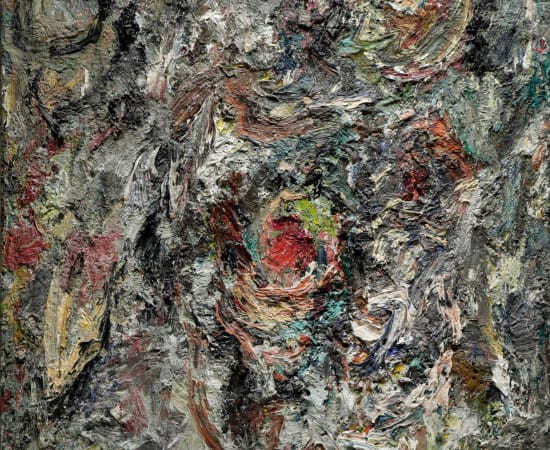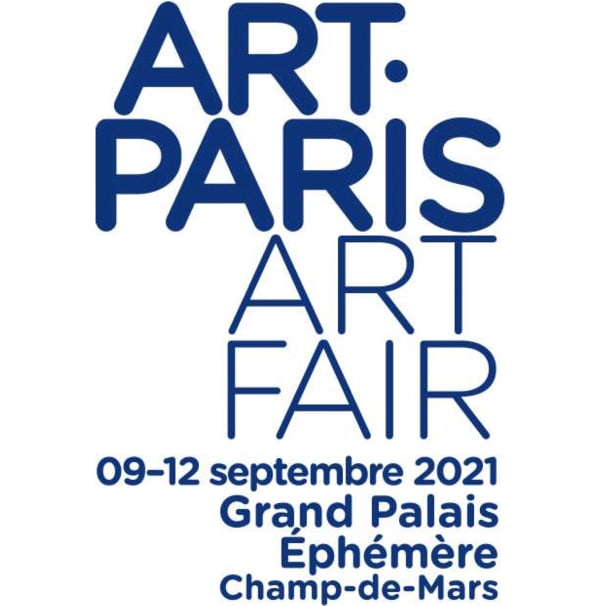Eugene Leroy French, 1910-2000
Eugène Leroy was one the greatest French painters of the second half of the 20th century. He was born on the August 8,1910 in Tourcoing and died on the May &à, 2000 in Wasquehal.
In 1931 he studied briefly at the School of Fine Arts in Lille and continued in Paris with drawing classes at the Grande Chaumière Academy. In 1935 he settled near Roubaix where, in parallel to his career as a painter, he taught Latin and Greek at the Notre-Dame-des-Victoires College.
Leroy exhibited for the first time in 1937 in Lille paintings that were a result of the impact made on him by seeing Rembrandt’s Jewish Bride at the Rijksmuseum in Amsterdam, and paintings by Malevich, whose work he discovered on a trip to Flanders in the Netherlands in 1936.
He was enlisted in 1940, then returned to Roubaix where he taught Latin and Greek until 1945, while painting genre scenes such as Le Massacre des Saints Innocents and L'Opéra de quatre sous. In 1943, he met the art critic Gaston Diehl who exhibited his work in Paris. From 1945 to 1950 he painted vast watercolor landscapes by the North Sea near Gravelines and Croix in grey and dark colors. In 1951, he met the art dealer Pierre Loen who bought a dozen of his paintings.
Leroy was passionate about the Great Masters, Giorgione, Rembrandt and Van Gogh and travelled to Germany, Spain and Italy as well as regularly exhibiting in Lille. He exhibited in Paris in 1954, along with Sam Francis and Serge Poliakoff. In 1958, he settled near Lille in Wasquehal, and met the sculptress Germaine Richier. He was supported by the great collectors of the North, Masurel and Leclerq.
In 1961, during an exhibition at the Galerie Claude Bernard in Paris, the young painter Georg Baselitz who was on a study tour, discovered Leroy’s work and became one of his most fervent admirers.
Baselitz wrote : « In his work, I found images that were as brown as the fields, as stone, as wood, as moss, as fragrance. A simple Dutch composition with an incredible accumulation of color… As if all the painter’s trousers were hanging from a single hook and telling the story of an unknown masterpiece ».
To the tutelage guidance of Rembrandt, an example of Jean Fautrier (1898 – 1964) should be included, as he represents the French side of Eugène Leroy’s work. From Rembrandt and Fautrier, who each explored in their own way, the many possibilities of matter, Eugène Leroy inherited the technique of impasto which gives an incomparable relief to his paintings, to the point of «entering a cavern» according to Baselitz. The great German painter was one of the first to see in Eugène Leroy’s painting «a totally new phenomenon» in the Paris of the New Realists.
At the beginning of the 1980s the German gallery owner, Michael Werner, friend and art dealer for the German painters Baselitz and Markus Lüpertz, became his agent, on Baselitz’s request, and organized exhibitions in Germany, Austria, Belgium, Greece and the United States. His painting was becoming increasingly characterized by layers of thick paint, extravagantly chaotic impasto where figures, portraits, nudes, landscapes emerged when the viewer observed the work in the most minute detail. Eugène Leroy worked the paint: he buried the image under matter, layer after layer, arriving at a concealment that seems complete. But from the layers of material and color, a figure, landscape, portrait or nude emerges and it is these layers that allows «the paint to be totally itself». Jean Clair wrote about him that he wanted to «not portray the ressemblance, but on the contrary, the undefined, the elusive, the unexpected».
In 1988, the Musée d’Art Moderne in Paris held the first retrospective of his work, followed by the Eindhoven Museum in the Netherlands. Eugène Leroy’s work was recognized once and for all.
In 2003, a dozen works by Eugène Leroy were donated as a gift to the Georges-Pompidou National Modern Art Museum in Paris.
In 2009, Tourcoing City Council accepted a donation made to the Fine Arts Museum by Eugène Leroy’s family, who was born in this city. The donation included 55 paintings, 13 sculptures, 140 drawings, 18 sketch books and 99 engravings, some 600 works in total.
In 2010, for the 100th anniversary of his birth, following this donation, the Fine Arts Museum in Tourcoing, which had become the MUba Eugène Leroy, organized an exhibition that presented 150 of his works.
This offcial reconnaissance was further pursued by the 2022 retrospective held at the Musée d'Art Moderne de la Ville de Paris.
«One has to be a painter to make images, and images make one paint, but that is a secret. », Eugène Leroy.



